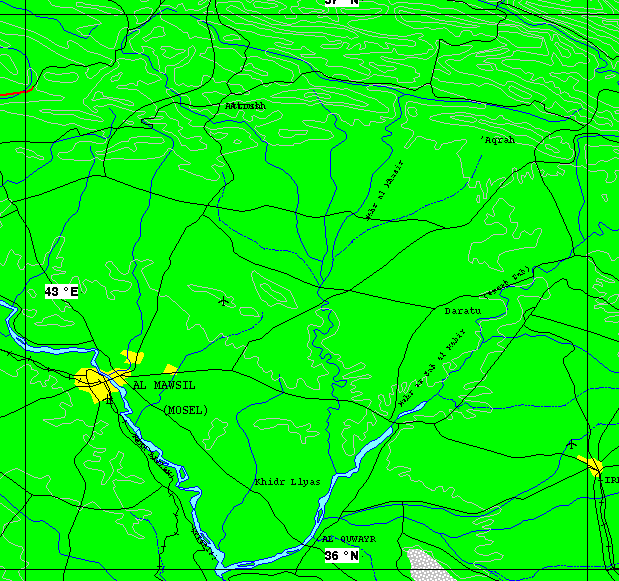





The Al Kindi Research Complex, formerly known as Saad 16 or the Sa'ad General Establishment, was a part of the State Organization for Technical Industries (SOTI), a part of the Iraqi Ministry of Defense. Another name for Sa'ad 16 was the "Research and Development Center." Al Kindi was one of the largest and most secret armament project in Iraq. The facilities constructed on the northern rim of the town on the Tigris River are located in a valley 1 km off the transit road to Sachu . The facility was guarded with electronics and video cameras by the military. The more than 3.3-km-long fence was equipped with watchtowers, and the main entrance was equipped with quick-action barriers. An independent energy supply provided power to the facility, which features extensive camouflage.
The facility's is a 100-meter-long hall for the construction of prototypes. In the northern part of the area a 120-meter-long subterranean shooting gallery -- 4 meters wide and 4 meters high -- was tunneled into the mountain. The walls were insulated with noise-proof naps. In a side valley to the west, there were 28 "resistance buildings," with stable roofs that are slanted down on one side and three stable walls. The fourth wall is made only of wood so that in case of laboratory accidents, the pressure of an explosion is purposefully directed into a harmless direction. Most of the 58 chemical laboratories were located there.
Adjacent, protected by walls on all sides, there was a missile test stand with control rooms and climate chambers. The buildings with measuring laboratories, which are close by, are also protected by a 150-meter-long wall against the chemical laboratories.As many as 38 German companies provided a comprehensive training program for Iraqi experts, who were trained in operating chemical laboratories and electronics workshops, wind tunnels, and physical test facilities. Gildemeister Projects GmbH (Gipro) of Germany was a major contractor for the Saad 16 project, and by some estimates US companies supplied 40 percent of the high-technology equipment for the Saad 16 project.


